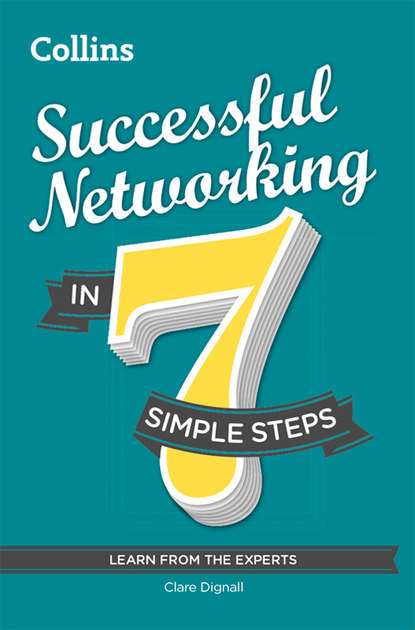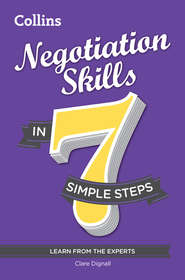По всем вопросам обращайтесь на: info@litportal.ru
(©) 2003-2024.
✖
Successful Networking in 7 simple steps
Автор
Год написания книги
2019
Настройки чтения
Размер шрифта
Высота строк
Поля
You will have many of your own questions to add to the above, but this list may give you ideas as to how you might plan your own networking successfully.
Three tools for network planning
If you are under pressure with work or the launch of your own business, you may feel that networking doesn’t feel ‘mission-critical’ enough to waste time in its planning. If that sounds like you, then three simple tools could help you manage your networking effectively:
Scheduling: Set aside a time each week or month to plan and review your networking and block this time off in your diary. That way, you won’t feel that you must ‘find’ time amongst your other commitments – you already have it set aside. Schedule these sessions for days when you know you’ll need a break from other projects; thinking about networking and the opportunities it can bring can be a good motivator if other things aren’t going your way. If it’s in your diary, you won’t be tempted to skip planning either – networking without clear goals can be haphazard and costly.
Funding: If you are starting your own business, or are networking for personal development, it’s a good idea to factor in a monthly allowance for networking. It’s positive to think of this as a necessary start-up cost, rather than an expense you can ill afford – you want to be able to catch up with contacts for coffees and lunches without feeling that you are dipping into earnings. If a once in a lifetime opportunity comes up, having some travel funds in place means you can enjoy the experience, rather than arrive stressed-out about your bank balance and resentful of the whole affair.
Measuring: Critical to your networking planning is finding a way to measure how you’re doing. Which network events result in the greatest number of active contacts? What are my monthly networking expenses against new business generated directly from it? Which contacts do I spend most time with and are we deriving mutual benefit? Does local networking yield more useful contacts than travelling to events further afield? You may ask any number of questions like this to identify how your networking is ‘delivering’, or combine them to interrogate your results effectively. Over time, you will build up a picture of the events, places and people that are most useful to you now, and others that may become more useful later. Asking questions helps you get the ‘big picture’ of the path you are taking through your networking career, and crucially, how to take charge of planning it.
There’s nothing quite like preparation to smooth your way into an event. Many of the following pointers apply to travel anywhere, but never more so than to a network event where it’s imperative you arrive looking cool, calm and collected.
Do you really know where you’re going?
It’s likely that you will attend network events in places you don’t know, and saying ‘I’m sure I will find it okay’ won’t do if you are going to avoid getting lost. On the night before, identify your route on a paper or online map and locate the nearest bus stops, stations or car parks.
Time your travel to the minute
If you want to ensure that you arrive promptly before cliques start to form you must research how long it’s going to take you to get there. Does the event start during the morning or evening rush hour? You’ll need to factor in extra time for travel. Is there public transport or parking nearby? Some posh events may be held in places that are ‘traffic-free’. In such cases you may have to allow time for walking to a venue – possibly with a laptop bag and in new shoes.
Make a checklist and count items in
To save time and effort working out what you need every time you network, create a checklist (business cards, tablet, phone, charger etc.) and attach it to the inside of your bag to literally count those items in and out. Networking conversations can be scuppered before they even start if you’ve left one vital piece of cable or a charger at the office or the previous venue and you’ve no other way to show your products. Forgetting things looks horribly unprofessional and it’s stressful too – don’t put yourself through it.
Check the weather
Travelling from one end of the country to another to network in one day? Check what the weather will be like where you’re going and dress for that, not for where you’re leaving from. Temperatures north to south can differ wildly and you can look foolish if your clothing looks inappropriate for the weather outside. Invest in a compact brolly that can be stashed anywhere too – nothing looks worse than wet hair.
Don’t be above a dress rehearsal
If this event is really important to you, don’t be above doing a dress rehearsal – actually wearing the clothes you plan to wear, actually carrying the laptop bag for two hours, and actually walking from your hotel to the venue to check how long it takes you in new brogues. You may only have to do this a couple of times at the start of your networking ‘career’. But it can be time very well spent.
Key take-aways
Write down the things you will take away from Step 1 (#u5f7c39d7-f2e3-5788-ac00-8296a277424a) and how you will implement them.
Step 2 (#ulink_4df6e4c0-3a1a-5814-9758-f320d61eb9d7)
NETWORK EFFECTIVELY ONLINE (#ulink_4df6e4c0-3a1a-5814-9758-f320d61eb9d7)
‘Let’s get real about this. Connection is what humans crave.’ — Stephen Fry, Actor, Author, Presenter and Social Media Enthusiast
Five ways to succeed
Check your network’s social media updates every day.
Keep your social media personal profile information up to date.
Maintain your online brand consistently and with integrity.
Customize all default social media invites.
Be mindful of social media law.
Five ways to fail
Prioritize social media over face to face interaction.
Use your personal Facebook page to do business networking.
Post anything, whether business-related or not.
Respond immediately to upsetting social media activity.
Never meet social media contacts face to face.
Networking relies on keeping all your important relationships in a state of health and good repair. It’s a time-consuming activity that needs planning and motivation, especially if your network is a growing one. To help manage large networks while still staying in touch, more and more business people are complementing traditional networking methods with the use of social media such as Facebook, Twitter, LinkedIn
and others. Such sites offer simple ways of keeping in regular touch that take up little time and don’t cost money. They allow you to update your whole network, or a group within it, with what’s new in your world – all in a single action. Such ‘push updates’ can help keep your contacts to feel valued and up to date.
What are the options?
While there are hordes of social networking sites out there to choose from, three could be said to be the ‘big players’ – at least at the moment.
You may be acquainted with Facebook, so we won’t go into any detail. For personal use, Facebook allows you to create your online profile, find and add other users as friends, post photos, send messages and join like-minded groups online. In this arena, its core premise is friendship or shared experience: it’s likely you’ll know, or at least have met, everyone you add as a friend on Facebook. For professional and business use Facebook is a flexible hub for contact details, product or services information, engaging content and interacting with clients. See www.facebook.com (http://www.facebook.com).
Presence on LinkedIn
is increasingly seen as a ‘must-have’ in the world of business. Users create a personal profile including their curriculum vitae, key skills and expertise, detailed work experience and more. Literally designed to extend and enhance the process of networking, registered users can invite anyone with whom they have some level of professional relationship to become a ‘connection’, effectively providing the user with a database of contacts and their specialist knowledge. Business people use it to stay in touch, stay abreast of the job market, or seek work. Employers use it to list jobs, search for, and check out potential candidates. By showing the user the connections of their connections, LinkedIn
also demonstrates opportunities for introductions through mutual contacts. See www.linkedin.com (http://www.linkedin.com).
Twitter is a social networking service whose core premise is that of ‘micro-blogging’, where users post and read messages or ‘Tweets’ of 140 characters or less. To receive Tweets, you must follow people or groups that interest you, whether they be friends, celebrities, brands, columnists, newspapers – or interesting strangers. Tweets are presented in a timeline, creating a concise and immediate digest of what’s happening in the world that interests you. Unlike Facebook, there’s no assumption that you need to know someone before following them. It is acceptable to follow, say, a celebrity, and open dialogue with them by replying to their Tweets. It is perhaps this lure of instant access to high-profile people that has been central to the ever-increasing popularity of Twitter. If you follow someone and they then choose to follow you, a further layer of communication is offered in the form of ‘direct messaging’ or the ‘DM’. These Tweets are not public, but can be exchanged between two parties who follow each other in addition to default public Tweets. See www.twitter.com (http://www.twitter.com).
What are their intended audiences?
is strictly professional – the work-life you, always at your best; Facebook, though most used for personal updates, is increasingly being harnessed by people to profile their business or profession entirely distinct from their personal Facebook account. Twitter can be used judiciously to post updates that may appeal to both personal and professional contacts – you could think of it as ‘first-date you’ – the whole story, but at its best.
We’ve identified the options, but what, in real terms, do you ‘do’ with social media? What functions can they carry out to enhance and extend your face to face networking?






